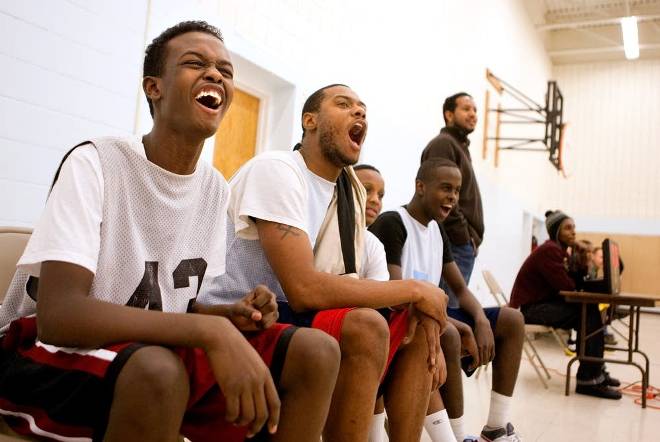Thestar Online
Sunday October 15, 2017

THERE’S an obvious reason why Minnesota is called the land of 10,000 lakes.
One of the coldest parts of the United States is also home to the great outdoors – numerous lakes, ponds, streams and a myriad of wildlife, flora and fauna.
Tourists to this northern part of the United States are always charmed by the friendly and resilient attitude of its people. And they are often surprised to learn that the largest Somalian diaspora in the United States resides in Minnesota and its largest city, Minneapolis, specifically.
There are an estimated 100,000 Somalis in the United States and more than 25,000 of them reside in Minneapolis. In fact, its Cedar-Riverside neighbourhood is called Little Mogadishu, the Somali capital of America.
The majority of this East African community immigrated during the 1990s at the height of the civil war in their homeland and with the help of NGOs and voluntary agencies, they were resettled in the Twin Cities areas. New waves of refugees subsequently fled Somalia because of famine, drought and continued political unrest.
The FBI launched a probe in 2014 when reports surfaced that a group of nine friends from Minneapolis’s Somali community had been recruited and were planning to travel to Syria to join IS. Some succeeded in making the trip, others didn’t.
Six pleaded guilty to conspiring to provide material support to a foreign terrorist organisation which has a maximum sentence of 15 years in prison.
The other three went to trial and in June 2016, a federal jury found them - Guled Omar, Mohamed Farah and Abdirahman Daud – guilty of plotting to join IS and commit murder overseas.
Latching on the outcome of this trial, President Donald Trump suggested that the Somalian refugees have turned Minnesota into a hotbed for terrorist recruitment, a view that is rejected by the community and state politicians who are fiercely welcoming of Minnesota’s immigrant population.
The case divided the Somali-American community. Some leaders argued that the government was overreaching in its anti-terrorism efforts, arresting Muslim males who recently graduated from high schools and never left the United States. None of the men on trial had previously committed a crime.
When the trial ended, then US Attorney Andrew M. Luger called it “one of the most important” trials in Minnesota in years because it put the spotlight on terrorism recruitment in the state. Now the Justice Department is focusing on the city’s Somali community as part of a pilot programme called “Countering Violent Extremism”, something that many Somali residents say is unwarranted.
Is Minnesota’s Muslim community more susceptible to terrorist recruitment strategies? Minneapolis’s FBI certainly thinks so. This division alone has 30 agents on its terrorism task-force.
A spokesman said that the low employment rate among the Somali youth in the Twin Cities was a factor in militant recruitment.
“The Somali community is self-sustaining. They do not need to interact with other communities because they live, work and play in neighbourhoods that are almost 100% Somali,” he said, adding that it was difficult for young Somalis to get decent employment outside their community.
He said foreign militant recruiters were becoming increasingly sophisticated and young people under their influence were getting better at hiding their intentions from authority figures, adding that this was a problem that was not going away.
“We have tried community outreach programmes in these neighbourhoods and we do have agents who speak the language, but by and large, the bureau is viewed with distrust,” he added.
Charles Kovats, the deputy criminal chief, national security section, US Attorney’s office, District of Minnesota, believes that the IS targets the Somali community in Minneapolis because it is fertile ground for would-be terrorists.
“IS is using social media to reach out to disenchanted Somali youth. We actually have high-quality videos made by IS to show the benefits of joining the organisation,” he said.
Kovats said that it was also peer to peer engagement as Somali-Americans who have fled to Syria earlier are shown in videos urging their compatriots to join them.
However, community leaders say that unemployment, not radicalisation, is the biggest obstacle facing young Somali men in the Twin Cities. Abdi Warsame, the first Somali city councilman of Minneapolis, told The Atlantic magazine that many first-generation Somalis work long hours as small-business owners or have low-wage jobs. But many of their children struggle to find their role in the local economy.
“You have a poor community that hasn’t integrated into a very rich state,” said Warsame, who took office in 2014. “There are jobs out there for plumbers, electricians but they are not the jobs our parents used to do back home.”
Though Minneapolis is a progressive city with a booming economy, its Cedar-Riverside neighbourhood has an unemployment rate three times as high compared to the rest of the city.
Tamim Saidi, a board member of the Islamic Resource Group, said that the key to preventing extremism was education. “We try to partner with Muslim community leaders, political leaders and law enforcement agencies to reach out to young people,” he said.
His group, founded in 2001, is a non-profit organisation that seeks to build bridges between Minnesota Muslims and the broader Minnesota community through education and dialogue.
Tamim, a pharmacist, also said that by preaching religious tolerance, religious leaders had an important role to play in preventing extremism in the community.